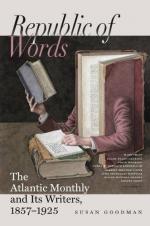[Footnote B: De Bow’s Review, January, 1850. Quoted in Olmsted’s Back Country, p. 451.]
Further, the policy of the Cotton King, however honestly in theory it may wish to encourage it, renders general education and consequent intelligence an impossibility. A system of universal education is made for a laboring population, and can be sustained only among a laboring population; but if that population consist of slaves, universal education cannot exist. The reason is simple; for the children of all must be educated, otherwise the scholars will not support the schools. It is an absolute necessity of society that in agricultural districts cultivated by slave-labor the free population should be too sparsely scattered to support a system of schools, even on starvation wages for the cheapest class of teachers.
Finally, though it is a subject not necessary now to discuss, the effect of the Cotton monopoly and dynasty in depressing the majority of the whites into a species of labor competition in the same branch of industry as the blacks, because the only branch open to all, can hardly have a self-respect-inspiring influence on that portion of the community, but should in its results rather illustrate old Falstaff’s remark,—that “there is a thing often heard of, and it is known to many in our land, by the name of pitch; this pitch, as ancient writers do report, doth defile: so doth the company thou keepest.”
Such, reason tells us, should be the effect on the intelligence and education of the free masses of the South of the policy and dynasty of King Cotton. That experience in this case verifies the conclusions of reason who can doubt who has ever set foot in a thorough Slave State,—or in Kansas, or in any Free State half-peopled by the poor whites of the South?—or who can doubt it, that has ever even talked on the subject with an intelligent and fair-minded Southern gentleman? Who that knows them will deny that the poor whites of the South make the worst population in the country? Who ever heard a Southern gentleman speak of them, save in Congress or on the hustings, otherwise than with aversion and contempt?[C]
[Footnote C: Except when used by the accomplished statistician, there is nothing more fallacious than the figures of the census. As the author of this article is a disciple neither of Buckle nor De Bow, they have not been used at all; but a few of the census figures are nevertheless instructive, as showing the difference between the Free and the Servile States in respect to popular education. According to the census of 1850, the white population of the Slave States amounted to 6,184,477 souls, and the colored population, free and slave, brought the total population up to an aggregate of 9,612,979, of which the whole number of school-pupils was 581,861. New York, with a population of 3,097,894 souls, numbered 675,221 pupils, or 98,830 more than all the Slave States. The eight Cotton States, from South Carolina to Arkansas,




